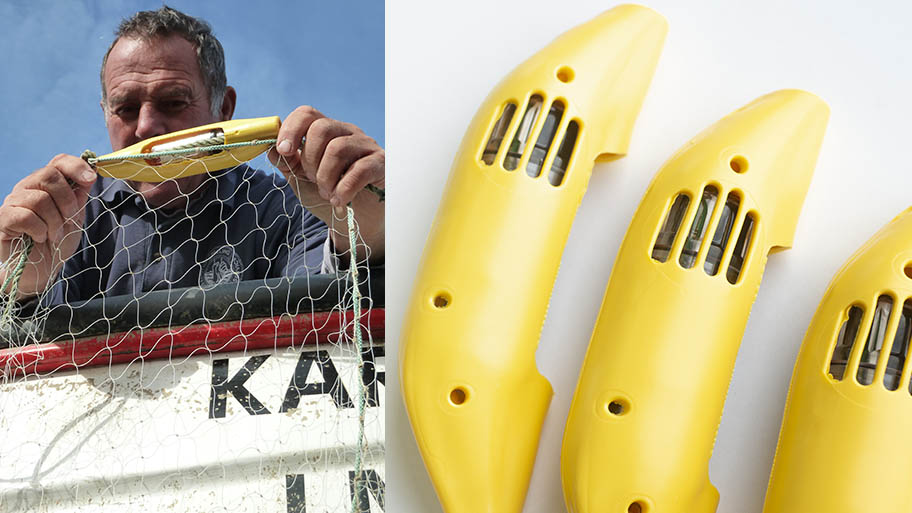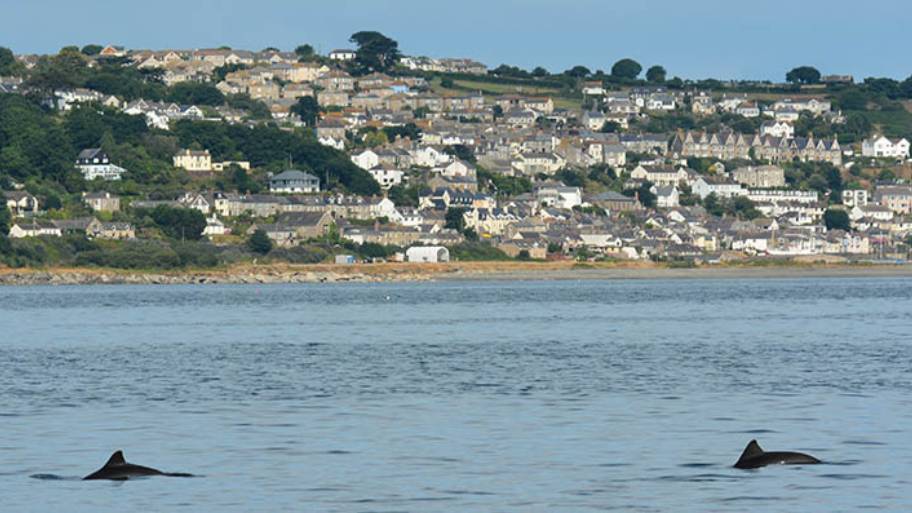The unwanted catch of marine mammals in fishing nets is a global problem facing fisheries.
In the UK alone, 14% of harbor porpoise and 23% of common dolphin deaths between 2011 and 2017 were attributed to bycatch (accidental and unwanted catch). Research in 2006 estimated global marine mammal bycatch to number in the hundreds of thousands.
Marine mammals take a long time to mature and reproduce slowly. This means their populations are particularly vulnerable and high levels of bycatch can lead to numbers declining faster than they’re able to grow.Sustainable fisheries are working hard to minimize their impact on marine mammals, though it can be difficult to eliminate all impacts. When fisheries are assessed against the MSC Fisheries Standard, they must demonstrate that they are not threatening populations of other species and are implementing measures to minimize unwanted catch. Fishing activity with bycatch can be certified as sustainable as long as the amount of bycatch is well-managed and affected populations remain healthy. Fisheries can help minimize bycatch and keep it at sustainable levels through research or modifications to fishing methods.
Pingers
The use of pingers is one method that fishers can use to modify their nets and help reduce bycatch. Pingers are a type of acoustic deterrent that can be fitted onto gillnets or trawl nets to repel marine mammals. They work by emitting a randomized sonic noise or “ping” which can be heard by dolphins and porpoises to help keep them away from the nets.
Fishers have been using pingers in some fisheries to prevent bycatch of marine mammals since 1996. Since then some countries have implemented regulations to increase the use of pingers. In the UK, for example, all fishing vessels over 12 metres fishing with certain gear in particular places must fit them.
However, concerns have been raised around the effects of habituation to the devices by marine mammals, i.e. when animals become familiar with the sound and begin to ignore it.
The Banana Pinger Trials
As pingers increasingly become mandatory, more are entering the marketplace. Devices require specific testing before implementation.
New research published in March 2020 tested whether porpoises became habituated to a specific product, the ‘Banana Pinger’ by developers Fishtek Marine.

The research, published in Frontiers in Marine Science, and led by the UK’s University of Exeter and Cornwall Wildlife Trust, showed porpoises were 37% less likely to be found close to an active pinger in Cornish waters.
The Fishtek Marine Banana Pingers were placed in the water along with two listening devices, one close to the pinger and one 100 metres away to record porpoise activity. The porpoises’ own clicks can be more than 100 times louder than the pinger.
After an eight-month study the researchers found no decrease in effectiveness and no habituation from porpoises, who appeared to return to the area as soon the pingers were switched off.
Conservation manager at Cornwall Wildlife Trust and co-author, Ruth Williams, explained: “The results show that there is a practical solution that is both effective and does not impact or change the animals' behavior – a positive result for both conservation and fishermen alike."
Lead author of the research, Dr Lucy Omeyer of Exeter University, said: "Based on our findings, it seems likely that pingers would reduce harbor porpoise bycatch in gillnet fisheries with no negative consequences.”
The Banana Pinger is already being used successfully in a commercial setting.
Dr Robert Enever, Head of Science & Uptake at Fishtek Marine Ltd. said: “The Banana Pinger’s two key features are related to reliability and being underpinned by scientific research. A recent report from The NOAA [U.S. Department of Commerce's National Oceanic and Atmospheric Administration] outlined that the Banana Pinger was the most reliable pinger in use in North and mid-Atlantic gillnet fisheries.”
Pinger Use by Fisheries Globally
Research into the effectiveness of pingers paints a mixed picture with the conditions, incentives and motivations of marine mammals having a significant impact on outcomes.Many MSC certified fisheries currently use pinger technology successfully. For example, the Cornish Hake fishery reported zero interactions with marine mammals in 2019. Likewise, the US Atlantic Spiny Dogfish fishery have successfully implemented pingers to deter harbor porpoises. However, pingers may not be suitable for all marine mammals.
In California, pingers were described as acting as “dinner bells” for sea lions, with individuals seen directly interacting with nets using pingers.
Use of the Dukane NetMark™ 1000, developed by NASA engineers, found harbor porpoises became habituated to their pinger. Other pingers aided a 50% reduction in bycatch that continued after a decade of deployment.
“The discrepancy in the efficacy of different pingers to reduce bycatch is often a result of overlooking why the animal is interacting with the fishery in the first place. They can either be targeting the fishery as a food source – or unintentionally becoming entangled by not detecting the net.” explains Dr. Enever.
“Where marine mammals are stealing fish then acoustic deterrents are much less likely to be long term tools to prevent this from occurring and could cause a ‘dinner bell’ effect to manifest. But where the animal is getting incidentally caught in nets, we would strongly advise pinger use.”
What Next for Pingers?
So, what does this mean for the future of pingers? And what research needs to be carried out to assure fisheries of their success?
Dr. Enever continues: “What we need now is greater uptake of them being used as a standard fixture on gillnet operations where bycatch is occurring– alongside other bycatch mitigation measures. Recent advice from ICES (International Council for the Exploration of the Sea) has advocated emergency widespread pinger use in at least two European fisheries in order to prevent further bycatch.
“More research on a wider range of species needs to be completed as well. They’re effective on porpoises because they’ve evolved to echo locate quietly and at high frequencies to hunt fish but also to remain less detectable by predators. This means their hearing is more acute and they’re particularly sensitive to low source level sounds – which is why pingers seem to be more effective.”
Commenting on the research, Matt Gummery, Fisheries Assessment Manager for the MSC explains: “It’s fantastic that pingers have been shown they can be used without leading to habituation or long-term behavioral effects on harbor porpoise.
“Pilot testing however should always be carried out before fisheries seek to implement specific improvement technology like pingers. When it comes to bycatch mitigation methods, it’s often not a one-size-fits-all approach. Outcomes can be fishery specific or enhanced by the use of other methods.
“Ultimately, each piece of research like this helps us further understand how marine mammals interact with fishing gear and informs us how to best protect them.”
This research was conducted by Dr Lucy Omeyer of University of Exeter in collaboration with Fishtek Marine Ltd, developers of the Banana Pinger, the Cornwall Wildlife Trust, Whale and Dolphin Conservation and Chelonia Ltd.


